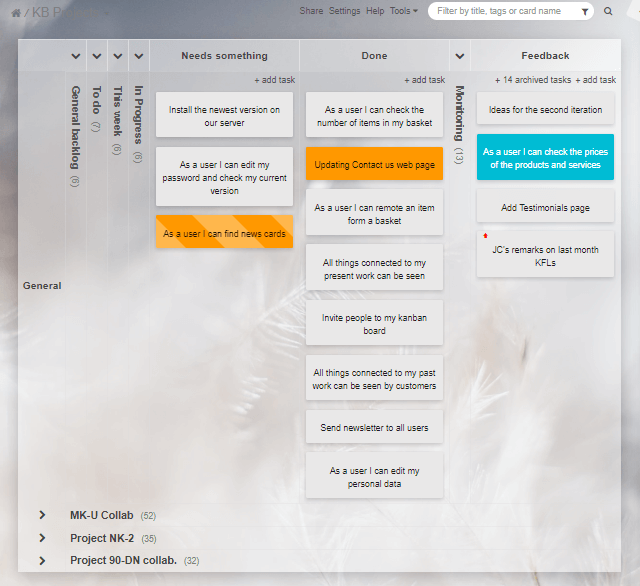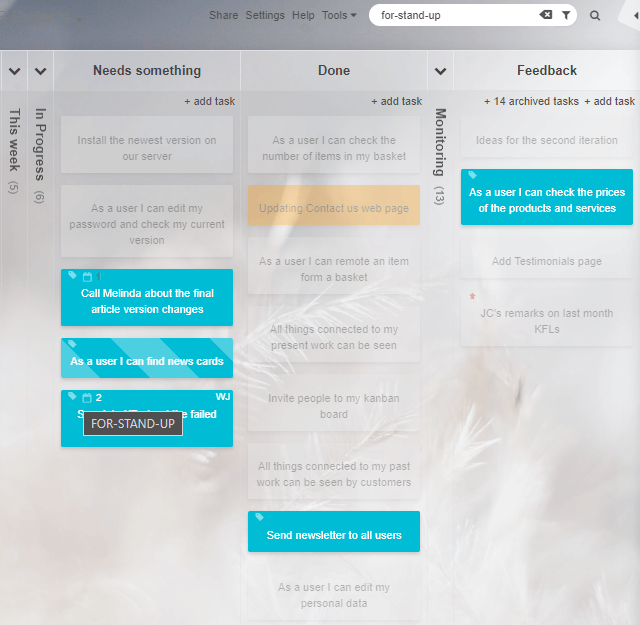Blog
Feedback Management with Kanban18 Aug 2020

Progress happens when you find a solution to a problem, that removes the problem from happening again, right? A leading factor making this possible is taking note of both your colleagues' and your stakeholders' feedback. First and foremost, we're concerned with their comments on the matter of your work, but let's also look at the comments on how you choose, process, and present the work to them.
It's rather common for managers not to have the time to take notes, review them, not to mention addressing their merit, and one could argue that's reason enough to drop all efforts to maintain feedback loops. But, assuming that your goal is to improve your product and process, to have less work to do, yet see more benefits of the work you do do, it may be worth your while to do something about staying in the loop and keeping others in it too.
What's the one thing I need to do to act on customer and team feedback?
Arguably, there is just one thing that needs doing for a client and team feedback to start being acted upon: making a conscious effort to look at it and consider it. Whenever people are commenting on how things are, or aren't, working out - which many of us often treat as chit-chat - think of this more in terms of actionable information. Note it down and set a date for when the team will take the time to address the problem.
What taking a step towards being more responsive asks for is that you set aside the time to address it. It's typically the one thing dividing truly agile, flexible teams from the more stagnant ones.
Time is of the essence here because even if you take the utmost care in listening to the client and team feedback, but don't make a plan to work on it, then one could argue that noting it down was a waste.
The idea of using a Kanban board centers on limiting work in progress and workflow visualization. So why not include a feedback stage as part of every process? It is, after all, an inherent part of the work! It will let you keep an eye on the need for 2-way communication between the company and its clients, and the company and its employees. If your product team works on a shared Kanban board, it can have an additional column for comments on the procedures and communications, as well as for client suggestions. Each issue can get a due date for when it needs a review.

If a process is elaborate enough, it could make more sense to automate feedback issues, have them sent to a workspace of their own. In that case, a team could agree to take a feedback review meeting once every fortnight or once a month, ensuring that the items don't just sit there unseen and unanswered.
Issues that need immediate action can be tagged on the board and addressed at the next meeting, giving you both a reminder of their presence and a link to their details, all in one place.

What's the benefit of actively and timely addressing your product and process feedback?
Aside from keeping the process flexible and always growing, you will also make it clear to the clients that their voice is valued. Through working on their requests and complaints, you stand a higher chance of building a product that responds to their need, will keep them happy, and make them stay longer with you.
And by addressing team feedback, you will transfer more power to your team - you will give them a platform through which they can speak out about inefficiencies, conflicts, or improvement ideas. That gives them a sense of purpose and an actionable opportunity to grow.
A key advantage of doing both of these things is a better, more competitive product and a happy, dedicated team working for loyal, invested customers. All you need is time set aside for looking at feedback, and some structure in gathering the issues and ideas.
Sign up for a 14-day free trial
to test all the features.
Sign up now and see how we can help
your organization deliver exceptional results.